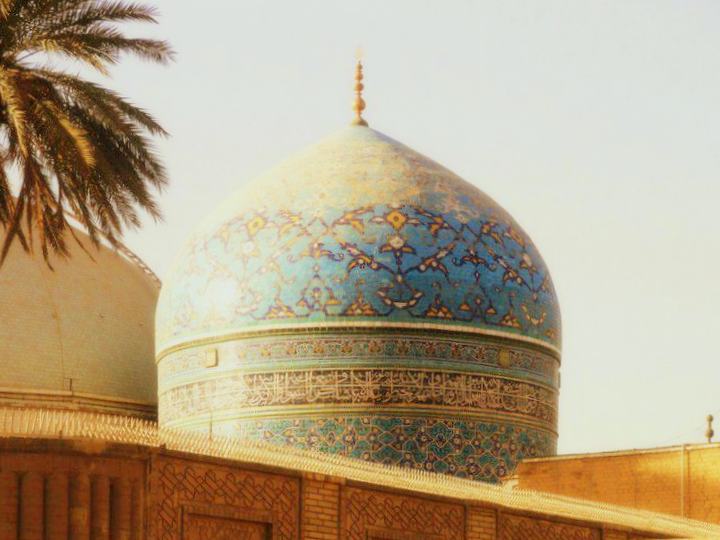Muʻīnuddīn Ḥasan Cishtī Sanjarī Ajmerī, 1142-1236
Enlarge text Shrink text- Muḥammad K̲h̲ādim Ḥasan Shāh Ajmerī. Muʻīn al-arvāḥ, 1983:t.p. (Muʻīnuddīn Ḥasan Cishtī Sanjarī Ajmerī) p. 11 (Khvājah G̲h̲arīb Navāz)
- LC data base, 5-30-84(hdg.: Muʻīnuddīn Cishtī, 1143?-1234?; variants: Muʻīnuddīn Ḥasan Cishtī Sanjarī Ajmerī, K̲h̲vājah G̲h̲arīb Navāz; K̲h̲vājah Muʻīnuddīn Cishtī)
- Currie, P.M. The shrine and cult of Muʻīn al-Dīn Chishtī of Ajmer, 1989:plate 1 between p. 108 and 109 (Muʻīn al-Dīn Chishtī [in rom.])
- Ency. of Islam(Čis̲h̲tī, Muʻīn al-Dīn Muḥammad, founder of a Ṣūfī brotherhood, given the name Aftābī Mulkī Hind; b. 537/1142, d. 633/1236)
- Kalam-i-lam yazal, 2000:t.p. (Khwaja Moinuddin Chishti) p. 4 of cover (K̲h̲vājah Muʻīnuddīn Cishtī)
- Khwaja Gharib Nawaz, 2007:t.p. (Khwaja Gharib Nawaz) p. 11 (Khwaja Moin-ud-Din Hasan Chishti, better known as Khwaja Gharib Nawaz)
- Rumi and Muin, 2008:t.p. (Muinuddin Chishti) p. 37 (Khwja Muinuddin Chishti Sanjari Ajmiri)
- K̲h̲vājah G̲h̲arīb Navāz, 2008:t.p. (K̲h̲vājah G̲h̲arīb Navāz = خواجه غريب نواز) spine (Khaja Gharib Nawaz)
- Tārīk̲h̲-i k̲h̲vājah-yi k̲h̲vājgān, 2011:p. 15 (Muʻīnuddīn Ḥasan Cishtī Sanjarī Ajmerī = معينالدّين حسن چشتى سنجرى اجميرى)
- Khājābābāra jībanacarita, 2011:t.p. (Hajarata Khājā Muẏīna Uddīna Ciśti)
- Daleel-ul Ârifeen, 2015:t.p. (Hazrat Khwaja Moinuddin Chishty popularly known as Khwaja Gharib Nawaz Ajmeri)
- Companion of the souls, 2021:title page (compiled by his Towering Khalifa Hazrat Khwaja, Moinuddin Hassan Chishty)
Mu'in al-Din Hasan Chishti Sijzi (Persian: معین الدین چشتی, romanized: Muʿīn al-Dīn Chishtī; February 1143 – March 1236), known reverentially as Khawaja Gharib Nawaz (Persian: خواجه غریب نواز, romanized: Khawāja Gharīb Nawāz), was a Persian Islamic scholar and mystic from Sistan, who eventually ended up settling in the Indian subcontinent in the early 13th-century, where he promulgated the Chishtiyya order of Sunni mysticism. This particular Tariqa (order) became the dominant Islamic spiritual order in medieval India. Most of the Indian Sunni saints are Chishti in their affiliation, including Nizamuddin Awliya (d. 1325) and Amir Khusrow (d. 1325). Having arrived in Delhi Sultanate during the reign of the sultan Iltutmish (d. 1236), Muʿīn al-Dīn moved from Delhi to Ajmer shortly thereafter, at which point he became increasingly influenced by the writings of the Sunni Hanbali scholar and mystic ʿAbdallāh Anṣārī (d. 1088), whose work on the lives of the early Islamic saints, the Ṭabāqāt al-ṣūfiyya, may have played a role in shaping Muʿīn al-Dīn's worldview. It was during his time in Ajmer that Muʿīn al-Dīn acquired the reputation of being a charismatic and compassionate spiritual preacher and teacher; and biographical accounts of his life written after his death report that he received the gifts of many "spiritual marvels (karāmāt), such as miraculous travel, clairvoyance, and visions of angels" in these years of his life. Muʿīn al-Dīn seems to have been unanimously regarded as a great saint after his death. Muʿīn al-Dīn Chishtī's legacy rests primarily on his having been "one of the most outstanding figures in the annals of Islamic mysticism." Additionally, Muʿīn al-Dīn Chishtī is also notable, according to John Esposito, for having been one of the first major Islamic mystics to formally allow his followers to incorporate the "use of music" in their devotions, liturgies, and hymns to God, which he did in order to make the 'foreign' Arab faith more relatable to the indigenous peoples who had recently entered the religion.
Read more on Wikipedia >
 Personality
Personality






